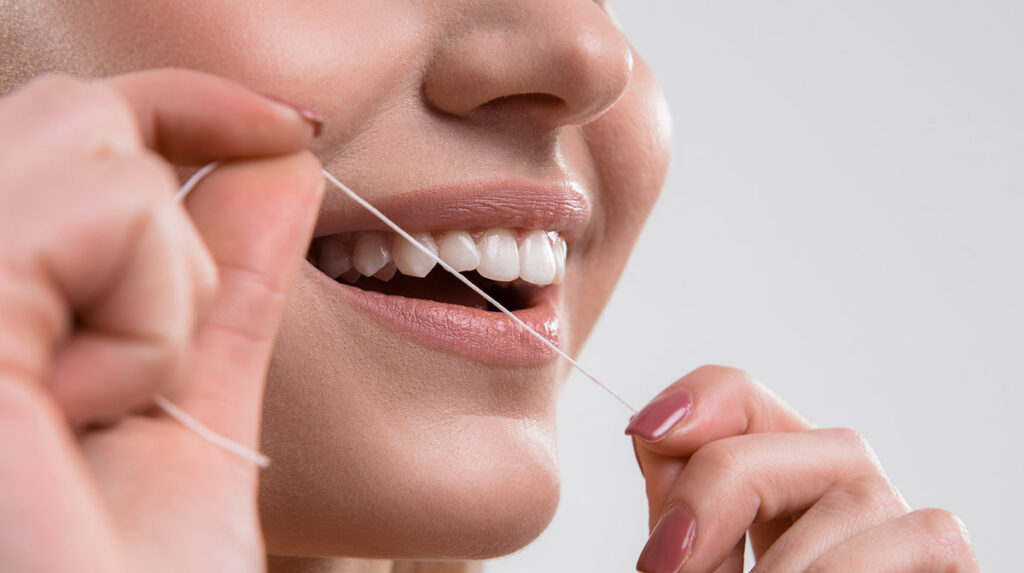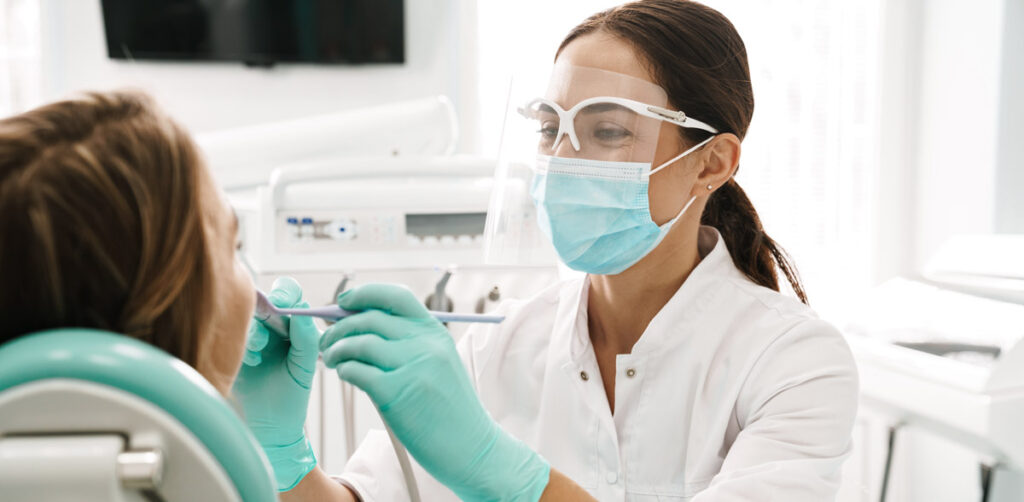How to maintain your smile between teeth cleanings

A healthy, bright smile is about more than just looks—it’s a reflection of your overall oral health. While routine dental cleanings are essential, the way you care for your teeth between visits is just as important. Daily habits help prevent plaque build-up, gum disease, and tooth decay, ensuring that your next professional cleaning is smooth and stress-free.
Many people assume that brushing alone is enough to maintain a healthy mouth, but true proper oral hygiene involves a more comprehensive approach. This guide will walk you through the best ways to maintain your teeth and gums between teeth cleanings, helping you avoid common dental issues and keep your smile in top condition.

Why are teeth cleanings so important?
When you visit a dental professional, they use specialised tools and techniques to perform dental cleaning procedures that remove plaque and tartar from your teeth. However, if you don’t maintain a good routine at home, hardened plaque can build up quickly, leading to gum inflammation, bleeding gums, and even loose teeth.
Skipping regular dental cleanings increases the risk of gum disease and more invasive treatments, such as root planing or a deep dental cleaning, which may require local anaesthesia. The best way to avoid these procedures is to take charge of your daily dental hygiene.
Let’s explore how you can care for your teeth between professional cleanings to prevent problems before they start.
Understanding the teeth cleaning process at the dentist
Dental cleaning procedures explained
A professional cleaning is a thorough dental procedure performed by a dental hygienist to maintain oral health and prevent gum disease.
The process begins with the use of an ultrasonic scaler, a specialised tool that helps remove plaque and hardened plaque from the teeth and gum line. This step is crucial in preventing plaque build-up, which can lead to tooth decay and gum inflammation if left untreated.
Next, the hygienist performs scaling, which involves scraping away plaque and tartar from the tooth surface and below the gum line.
In cases where deeper cleaning is needed, root planing may be necessary. This involves smoothing the roots of the teeth to prevent bacteria from accumulating in periodontal pockets, reducing the risk of infection and helping to treat gum disease. For patients with advanced gum disease, this step may require local anaesthesia to minimise discomfort.
Finally, the cleaning process is completed with polishing, which removes surface stains and leaves the teeth feeling smooth and clean. This step not only improves the appearance of the teeth but also makes it harder for plaque to stick to the surface, extending the benefits of the dental cleaning.
Regular professional cleanings help maintain healthy teeth and prevent the need for more intensive dental procedures in the future.
Brushing techniques for maximum effectiveness
Choosing the right toothbrush and toothpaste
A dental hygienist will always recommend a soft-bristled toothbrush to protect the gum line and prevent enamel wear. Electric toothbrushes can be even more effective in breaking down plaque build-up and removing stains.
Using fluoride toothpaste is essential for strengthening enamel and preventing tooth decay. If you experience tooth sensitivity, choose a toothpaste designed to block pain and protect the nerves inside your teeth.
The correct brushing method to prevent damage
Many people brush too aggressively, thinking it provides a deeper cleaning. However, this can cause gum inflammation and even enamel erosion. Follow these steps:
- Hold your toothbrush at a 45-degree angle to the gum line.
- Use gentle, circular motions rather than scrubbing.
- Brush for two full minutes, twice a day.
- Don’t forget to brush your tongue, as it harbours bacteria that cause bad breath.
Flossing and interdental cleaning
Why flossing is essential for gum health
Many people neglect flossing, but it’s one of the most important steps in maintaining oral health. Brushing alone can’t remove food debris and plaque build-up from between teeth, which increases the risk of gum disease and periodontal pockets.
Alternative tools for cleaning between teeth
If traditional dental floss is difficult to use, try:
- Interdental brushes to clean between wider gaps.
- Water flossers, which use a stream of water to remove bacteria from between teeth.
- Floss picks, which make flossing easier and more convenient.
Diet and its impact on oral health
Your diet plays a key role in oral health, affecting plaque build-up, tooth decay, and gum disease. Eating nutrient-rich foods strengthens your teeth and gums, while sugary and acidic foods can cause cavities and tooth sensitivity.
Foods that strengthen teeth and gums
Dairy products like cheese, milk, and yoghurt provide calcium to strengthen enamel. Leafy greens and nuts are rich in phosphorus, supporting strong teeth. Crunchy fruits and vegetables, such as apples and carrots, act as natural plaque removers, helping to remove bacteria while stimulating saliva production.
Sugary and acidic foods to limit or avoid
Sugary drinks like fizzy sodas and fruit juices contribute to plaque build-up and tooth decay. Sticky sweets cling to teeth, increasing the risk of cavities. Beverages like coffee, tea, and red wine cause surface stains and dry out the mouth, reducing saliva protection.
Making smart dietary choices helps maintain dental hygiene and extends the benefits of professional teeth cleanings.
Additional oral hygiene practices
The benefits of mouthwash and how to use it properly
A fluoride or antibacterial mouthwash can help remove bacteria, freshen breath, and reduce plaque build-up. Swish for at least 30 seconds after brushing and flossing to maximise effectiveness.
The role of hydration and saliva in dental health
Drinking water throughout the day keeps your mouth hydrated and helps remove bacteria. Saliva is a natural defence mechanism against tooth decay, so staying hydrated is essential for maintaining oral health.
Lifestyle choices and dental well-being
The impact of smoking and alcohol on your teeth
Smoking is one of the leading causes of gum disease, loose teeth, and gum inflammation. It also slows healing after dental treatment. Similarly, excessive alcohol consumption can dry out the mouth, leading to a higher risk of plaque build-up.
Managing dental anxiety and regular cleanings
Many people experience dental anxiety, which prevents them from seeking routine dental cleanings. However, avoiding the teeth cleaning process can result in more severe dental issues, requiring treatments such as deep dental cleaning or even surgery to treat gum disease.
If you struggle with anxiety, try:
- Talking to your dentist about sedation options.
- Using relaxation techniques such as deep breathing.
- Bringing music or a podcast to listen to during your dental exam.
Fulham Road Dental: professional teeth cleanings you can trust
Maintaining your smile between routine dental cleanings requires dedication to proper oral hygiene. Brushing and flossing daily, making smart dietary choices, and avoiding harmful habits like smoking will help you maintain a bright, healthy smile.
At Fulham Road Dental, our expert hygienists offer comprehensive services tailored to your individual needs, including ultrasonic cleaning, stain removal, and treatment of gum disease.
Utilising the latest EMS cleaning technology, we do all we can to ensure maximum comfort while effectively removing plaque and tartar. Our team will work with you to develop a personalised oral care plan and schedule regular appointments so that you can achieve optimal dental health and enjoy a confident, healthy smile.


